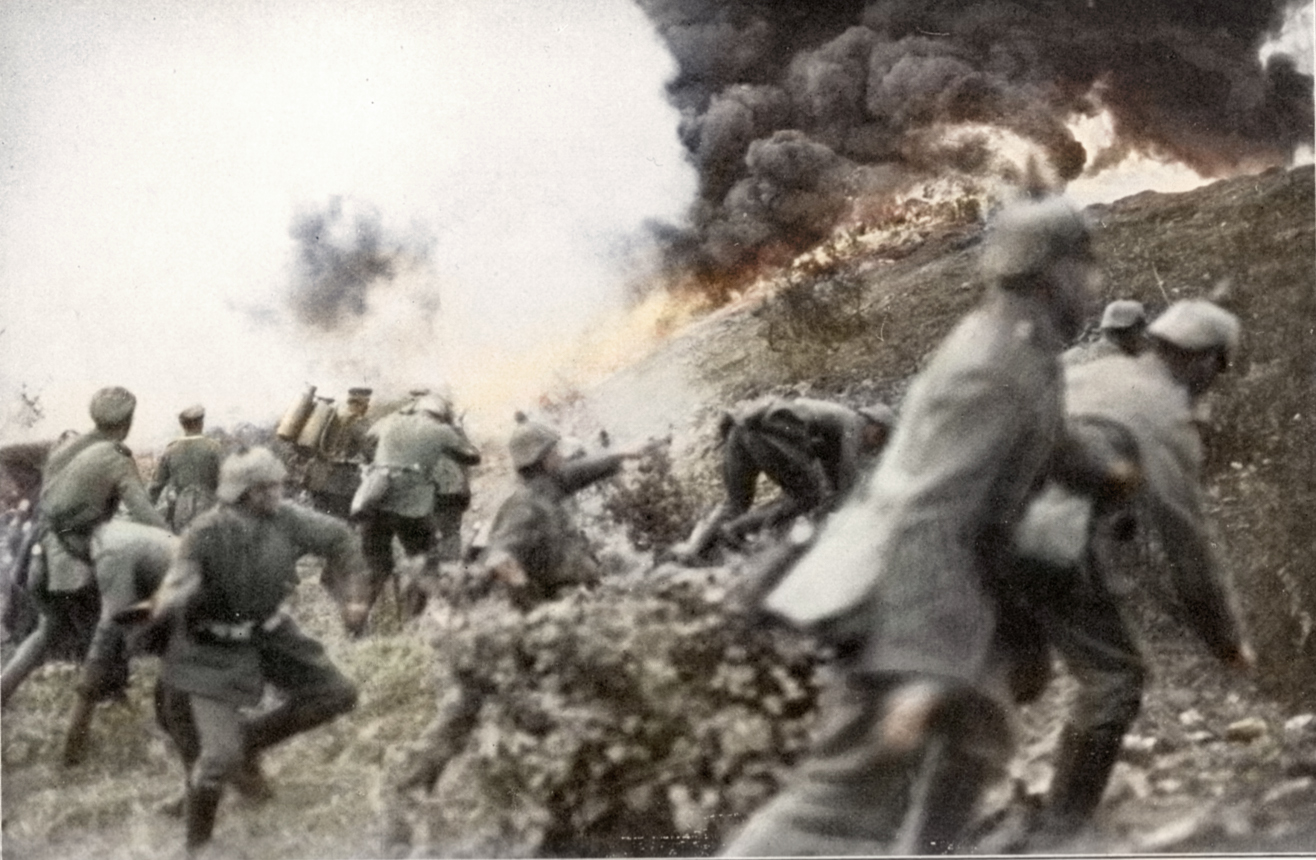Will Flamethrowers and Grenades Break Deadlock?
Russia’s Problem: Desperate Shortage of Rifles.
Special to The Great War Project
(25-27 February) Many areas of the Western Front are inactive and confined to trenches.
Despite the stalemate though, attacks and counterattacks are a regular and in some cases murderous presence in many sections of the extensive trench lines in France and Belgium.
But they do not bring decisive victories.
Key zones of the front are “too broken, stream-cut and tree-choked,” writes war historian John Keegan. Elsewhere the zones are too water-logged, nothing but quagmire.
“Much of the front was unsuitable for the style of major operations both sides envisaged,”
…reports Keegan. “in which the power of artillery would prepare the way for large-scale infantry assaults to be followed by cavalry exploitation into open country.”
So the Germans introduce new weapons to the battlefield in an attempt to break out from this clogged trench warfare. On February 26th a century ago, the German side uses flamethrowers for the first time, according to historian Martin Gilbert, in an attack on French trenches.
The attack occurs near the town of Verdun in northeastern France. “This was the first of an estimated 653 flame-thrower attacks,” reports Gilbert. “But the trench system, with its deep protection, gave flamethrowers little more than the element of surprise.”
Shortly after this, another new weapon makes its debut. “French troops were issued with grenades for the first time,” Gilbert writes. On that day, “a seventy-strong German infantry detachment, advancing behind armored shields for the first time, lost half its men killed or wounded, without piercing the French trenches.”
Among the wounded on the French side, a Captain Charles de Gaulle.
Another important development, the British continue to train soldiers and send them to France. At the start of the war in August 1914, the British Expeditionary Force numbers about 350,000 men. Now reinforced by hundreds of thousands of volunteers, the British create two armies on the Western Front.
“Soon,” reports Keegan, “the British would be able to take over stretches of the line from their ally [France] and find a striking force to mount offensives on their own initiative.”
These new recruits plus the French forces will soon test their mettle at the French town of Neuve-Chapelle.
Elsewhere, the problem is not with new weapons. There are not enough old weapons.
Russia fields an army of 5 million, but can only provide 650,000 rifles, reports historian Geoffrey Wawro.
“Others estimated the number of Russian rifles at just over one million,” he reports. “Whatever the actual number, millions of Russian troops were standing around more or less uselessly, waiting for comrades to be struck down by wounds or disease in order to have their rifles.”
Despite this, the Russians inflict blow after blow on the forces of Austria-Hungary threatening to take the battle over the Carpathian Mountains that separate eastern from central Europe and into the Hungarian heartland of the Habsburg Empire.
Austria-Hungary is facing total collapse. Some believe the only reason the Dual Monarchy is still in the fight is the shortage of Russian weapons.


